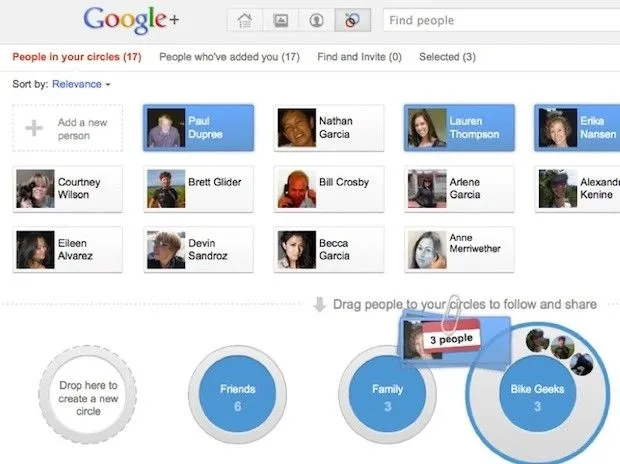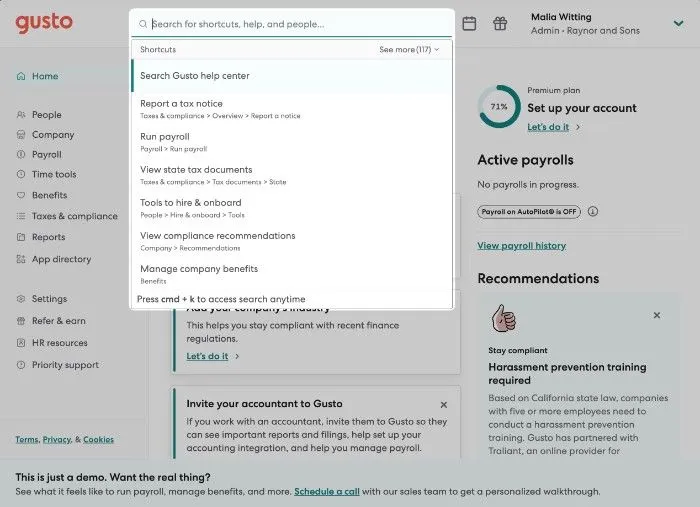3 tried and true ways to improve product adoption rate
You've created something awesome. Now you need to figure out how to keep people using it. Here's how to tackle product adoption.

Founders love to brag about conversion rate hacks that boosted their signups. And boosting signups to your SaaS product is great.
The people writing celebratory LinkedIn posts probably don't tell you what happens after all those users signed up. Did users stick around? For how many did the product become important?
Signup rates don't mean much without a good product adoption rate—the percentage of people who become regular users after signing up.
Here's an example that didn't work:
Remember Google+? No? Don't worry, this isn't a trick question. Even though it came from mighty Google, Google+ was a failure. Here's a quick recap.
- Way back in 2011, Google unveiled its response to Facebook – Google+.
- When it was first released, there was immediate intrigue and excitement. "Wow, Google is taking on social media!!"
- Skip ahead to 2018. A Google VP revealed that “90 percent of Google+ user sessions are less than five seconds.” *Womp*
So, yeah, that may be why you don’t remember it.

Google+ had a lot of potential, but it failed to gain user traction. One of the main reasons for the flop was the poor product adoption rate. The user onboarding process was confusing. The site overloaded users with information. There was no clear value proposition (“Why should I use this instead of Facebook?”).
Content:
- What is product adoption rate?
- Why is product adoption rate important?
- How to measure product adoption rate
- Why your product adoption rate is low
- Concrete tips to increase product adoption rate
- Going beyond: product adoption metrics
- Conclusion
What is product adoption rate?
Product adoption is the process where users start using a product and continue to use it over time. Product adoption rate is the percentage of users that adopt your product.
This means they are using your product to achieve their goals. Product adoption rate is different from user activation. The latter measures the number of users who have signed up for or downloaded your product.
Why is product adoption rate important?
Product adoption rate is important because it’s a key indicator of the success of your product. A high product adoption rate means that users find value in your product and rely on it. They're not just visiting your product one time and never returning - they're coming back. This can lead to increased product adoption metrics, as well as revenue, customer loyalty, and word-of-mouth marketing. Ka-ching!
How to measure product adoption rate
To measure product adoption rate:
- Calculate how many users have adopted your product
- Divide the number above by how many users have signed up for your product
The formula for product adoption rate is: (users that adopted your product ÷ signups) x 100
Let's look at a basic example:
- 100 users have signed up for your product
- 50 users have adopted your product
- Your product adoption rate is 50%
Getting more specific with usage frequency
You might notice that the numerator ("users that adopted your product") is a loose term. The precise definition varies from company to company. Some common metrics are:
- Monthly active users (MAUs)
- Monthly active users (MAUs) that meet certain criteria; for example: (a) average > 2 active hours per week; (b) have used important features a and b; (c) first signed up > 1 month ago
- Paying users
- Users that spent > $x in the last 3 months
These are the basics. Some dial it up a notch by also considering usage frequency. For example, say you define "user adopted product" = MAU. You might decide that not all MAUs should count as having adopted the product. After all, what if a user opened the app by accident or logged in for a minute before closing the tab? You can eliminate this noise by introducing a component of usage frequency.
Remember to contextualize product adoption rate
It’s important to remember that product adoption rate depends on the details of your company. Consider what makes sense for your product as well as "what good looks like." These are some attributes that will affect your product adoption metrics:
- How long your product has been live
- The target user profile (e.g., B2B vs. B2C)
- The type of product you have (e.g., marketplace vs. productivity tool)
Once you've decided what makes sense for your product, you should feel excited. Product adoption rate is a useful tool. It can reflect your product's success (If you're wondering how to measure that, check out these product metrics examples). It can also identify areas where you can improve.
So, what can you do if your product adoption rate isn’t where you want it to be? We’re here to help.
Why your product adoption rate is low
You’ve worked hard to develop a product that will meet a need or solve a problem for your customers. Now you’re struggling with product adoption rates. Why is that happening, and what can you do about it? It's usually one or more of these three issues.
1. The product is not user-friendly
An unfriendly user interface/experience can be a killer. How can you tell if your product is not friendly? Look for any of the following qualities: overwhelming, confusing, unintuitive, buggy, slow. These are common sources of user friction.
Depending on how honest you are about your product, you might already be jumping ahead to the next bullet. I'd caution you to reflect on this one for a bit. Imagine scoring your product on each of the dimensions above. Looking at the individual scores, you might conclude all is good. But here's where things get interesting. Users do not experience the above qualities on a one-off basis -- the factors hit at the same time.
Let's unbox this with a more concrete example. You're aiming for a frictionless UX, but in reality, let's say your product's user onboarding flow (a) is confusing; (b) the final step has a bug. The effects of the confusion and the bug amplify one another in a multiplicative fashion. The result is that a new user is much more disappointed than if there were only a bug or only confusion. To put this into numbers, we can imagine the following.
- Customer satisfaction score with only bug: 8/10
- Customer satisfaction score with only confusion: 8/10
- Customer satisfaction score with both bug and confusion: 2/10
User adoption often correlates with customer satisfaction. Make your product as friendly as possible for users. If you don't, you are racing against your competitors with your feet tied together. Good luck winning.
2. The product's value is unclear
These are two close but different statements:
- My product is valuable
- Users understand that my product is valuable
Almost all products can argue that (1) is true for their product. Not many can say that (2) is true. If you have (1) but not (2), you will most likely struggle with product adoption. You have users, but you're not convincing them to become active users.
What leads to this gap? Your product is valuable, but users don't understand its value. This is common and happens for many reasons:
- Users give up on your product before getting to an aha moment, and finding its value. The product could be confusing or overwhelming for new users. It's also possible that the most valuable functionality is buried. A user onboarding tool, like a tracking tool, can help you understand what's happening here.
- Users understand your product's potential value but cannot actualize it. A classic example of this is when a product has stellar marketing content/copy but a poor in-app experience.
- Users have experienced your product's value, but the cost (non-monetary) is too great. Either the time or the energy required to use your product is too high.
3. The product lacks user support or has poor customer service
It is impossible to create a product that all users immediately understand. There is a 100% chance that some of your prospects will have questions as they start using your product. The question is how well you can answer those questions. Many products struggle with this -- providing low-quality answers or failing to resolve important questions while the prospect is still interested.
Concrete tips to increase your product adoption rate
No one likes philosophical articles about product adoption. Let's make things real. *Boom* Here are product "hacks" that you can copy-paste to your team right after reading this article.
1. Make your product friendlier by making your onboarding immaculate
User friction is an enemy of a good product. User confusion is another enemy of a good product. Luckily, in-app guidance, like onboarding checklists, can help. They're the perfect tool to combat these evils. Be careful, though. If haphazardly implemented, user onboarding can backfire and frustrate your users.
At its best, user onboarding can be a significant driver of success (and revenue).
- New users understand your product's value proposition
- Users hit their "aha" moment faster
- User engagement and customer satisfaction increase
Tips to make your onboarding immaculate
- Use modals sparingly. Modals command the user's attention. There are two sides to this coin. Early in the user journey, users are more likely to engage with a modal. After seeing many modals, users will give them the pop-up treatment: instant close.
- Use checklists. Checklists are a good fit for most products. You can section onboarding steps by use case or by value. Users can also return to the checklist at any point. This enables users to focus on what matters to them.
- Keep product tours short and sweet. Use at most 4 steps in product tours. Product tours with 5 steps are completed by only 20% of users. Product tours with 4 steps are completed by 40% of users. More completed product tours = higher feature adoption rate = higher user adoption rate.
- For more tips, check out these gold-star examples of user onboarding.
2. Discover your product's happy paths and unleash them
What is a happy path? A happy path is like a bullet train to a pot of gold. It should be easy for users to find and follow, leading to user success.
What is user success? The answer varies based on what your product does.
- For Google, user success is a user seeing the result they were hoping for.
- For Facebook, user success is a user connecting with friends and family.
- For Amazon, user success is a user finding and buying the product they want.
Tips to discover and productize happy paths
- Identify your product's "pot of gold." A happy path that leads nowhere isn't really a happy path. The journey is important, and the destination is equally important. There is likely some killer feature or workflow that your most loyal users have adopted. Figure out what that is. User feedback, session playback tools, and product usage analysis are your best friends here.
- Streamline, simplify, and delight. Imagine customers have to travel 5 miles from town to get to your restaurant. Ignore costs for now. The speed and ease of getting there is everything. (A) Providing bikes is a nice start. (B) Door-to-door shuttle service is great. (C) It turns out autonomous jetpack rides are the optimal experience. They're lightning-quick, require no effort (autonomous), and are fun. Your product should make users feel like they're riding on an autonomous jetpack. You might not be able to make all aspects of your product incredible. But you should focus on building your happy paths with these principles in mind. Make it as fast, easy, and enjoyable as possible for users to find your pot of gold.
3. Empower your users with the self-service they deserve
What is self-service? It's the software version of self-checkout in grocery stores. Self-service is a set of tools that lets users do what they want without help.
What tools are we talking about?
- Onboarding flows (covered above). This includes product tours, modals, tooltips, etc.
- Help hubs (aka resource centers). Help hubs provide users with an always-accessible interface for exploring your product's help content and asking questions. The most elite versions allow users to dive into product tours or tutorials based on the user's context (e.g., where they are in your product, what they have searched).
- Command palettes. Command palettes, or command bars, are modals that allow users to search content, jump to specific pages, take CRUD actions, etc., all from one place. How can a command palette improve product adoption? (1) For new users, command palettes provide an organized menu of all the actions and content in the product. (2) Apps can recommend relevant and useful options based on the user's context. (3) Users can more quickly find what they want.

Going beyond: product adoption metrics and more
Product adoption rate is a great starting point for diving into your product usage data. If you are interested in going deeper, there are many doors you can open. One of the benefits of measuring more in your product is that your team will be better equipped to make data-driven decisions.
Let's start with metrics closely related to product adoption rate. We'll call these "product adoption metrics."
- Time to Value (TtV)
- Active users (e.g., daily active users)
- Feature adoption rate
There are also a wide array of other product metrics. We'll cover two of our favorites.
- Customer lifetime value
- Net promoter score
Time to value (TtV)
Time to value measures how long it takes a user to reach one of your product's "aha" moments. For Slack, the TtV for their user onboarding experience is measured as the time it takes a workspace to reach 2000 messages.
Decreasing time to value is a surefire way to improve the new user experience and drive product adoption. If your time to value is high, consider the following:
- Enhancing your product's in-app messaging strategy with onboarding checklists, contextual tooltips, or announcement modals.
- Productizing "happy paths" (e.g., getting started flows) to make it easier for new users to discover your app's killer feature(s).
Active users
Active users are most commonly measured by day or month. Daily active users (DAUs) and monthly active users (MAUs) are the number of users that use your product during the specified time period. However, you can choose any time period you want -- e.g., weekly active users (WAUs).
As discussed above, active users go hand in hand with user adoption. Many companies measure user adoption or product adoption as active user count divided by number of signups.
Active user count gives you a bird's-eye view of your product.
- When your number of active users increases, your product is doing well and can be used to identify and measure power users, for example.
- When your number of active users decreases, something is likely going wrong (or it's just a holiday lull).
Feature adoption rate
The percent of customers that used a particular feature during the time period. Feature adoption rate can help your team pinpoint which features need more love and which are succeeding. Sometimes in-app messaging is all it takes to improve feature usage – your users simply do not know the feature exists or how they should use it. In other cases, core functionality might be missing.
Feature adoption goes hand in hand with product adoption. Say a user is repeatedly using your most valuable features. They are more likely to return to your product and become consistent users.
Customer lifetime value (CLTV)
Customer lifetime value measures the revenue you can earn from your average customer over their lifetime. Customers need to derive more value from your product to increase lifetime value. Increasing customer lifetime value is a top priority for many companies since it generally means generating more revenue.
One major caveat is that you should pair customer lifetime value with one of the active user metrics above. If your number of active users decreases, it is possible to lose revenue while increasing customer lifetime value.
Net Promoter Score (NPS)
Net promoter score reflects how likely users are to recommend your product to others. A higher NPS indicates that your users are satisfied with your product and are more likely to refer others. NPS survey tools are a quick and easy way to get a pulse on how your users view your product. These surveys are often deployed with conditional follow-ups to ask users what they like or dislike, based on their responses.
This feedback is valuable. Digging into why new users dislike your app can help your team right the ship and improve product adoption. Sometimes a new feature or an improved customer success strategy is all it takes to increase customer retention. Here's how you can trigger a survey when a user is confused using Command AI.
Conclusion
Improving your product adoption rate is a journey. And hopefully, you will arrive at the destination (good product adoption). Ensure your product is user-friendly, its value is clear, and you support your customers. When you struggle, remember -- even Google stumbled with Google+ because they missed these crucial points.
You've created something awesome. Now you need to figure out how to make it something that users not only want to try but want to continue using.
